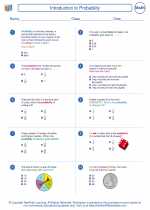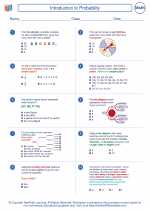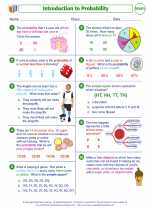One-to-One Correspondence
One-to-one correspondence is a fundamental concept in mathematics that relates to the pairing of elements in two sets such that each element in one set is paired with exactly one element in the other set. This concept is crucial for understanding the idea of counting and comparing the quantities of different sets.
Key Concepts:
- Pairing: In one-to-one correspondence, each element in one set is paired with exactly one element in the other set, and vice versa.
- Uniqueness: Each element in one set must have a unique pairing with an element in the other set, and no element can be left unpaired.
- Counting: One-to-one correspondence is often used in counting to ensure that each object in a set is counted exactly once.
Examples:
Consider the following examples to understand one-to-one correspondence:
Example 1:
Pairing the elements of Set A = {a, b, c} with the elements of Set B = {1, 2, 3} in a one-to-one correspondence:
- a is paired with 1
- b is paired with 2
- c is paired with 3
Example 2:
Counting the number of students and the number of desks in a classroom using one-to-one correspondence, where each student is paired with exactly one desk.
Study Guide:
To master the concept of one-to-one correspondence, follow these study guidelines:
- Understanding Pairing: Practice pairing elements of different sets to ensure that each element has a unique pairing in a one-to-one correspondence.
- Real-life Examples: Look for real-life examples where one-to-one correspondence is used, such as counting objects or matching items in pairs.
- Counting Practice: Practice counting objects using one-to-one correspondence to ensure that each object is counted exactly once.
- Problem-solving: Solve problems that involve matching elements in sets using one-to-one correspondence.
◂Math Worksheets and Study Guides Seventh Grade. Introduction to Probability
Study Guide Introduction to Probability
Introduction to Probability  Worksheet/Answer key
Worksheet/Answer key Introduction to Probability
Introduction to Probability  Worksheet/Answer key
Worksheet/Answer key Introduction to Probability
Introduction to Probability  Worksheet/Answer key
Worksheet/Answer key Introduction to Probability
Introduction to Probability  Worksheet/Answer key
Worksheet/Answer key Introduction to Probability
Introduction to Probability 

 Worksheet/Answer key
Worksheet/Answer key
 Worksheet/Answer key
Worksheet/Answer key
 Worksheet/Answer key
Worksheet/Answer key
 Worksheet/Answer key
Worksheet/Answer key

The resources above cover the following skills:
Data Analysis and Probability (NCTM)
Understand and apply basic concepts of probability
Use proportionality and a basic understanding of probability to make and test conjectures about the results of experiments and simulations.
Connections to the Grade 7 Focal Points (NCTM)
Probability: Students understand that when all outcomes of an experiment are equally likely, the theoretical probability of an event is the fraction of outcomes in which the event occurs. Students use theoretical probability and proportions to make approximate predictions.